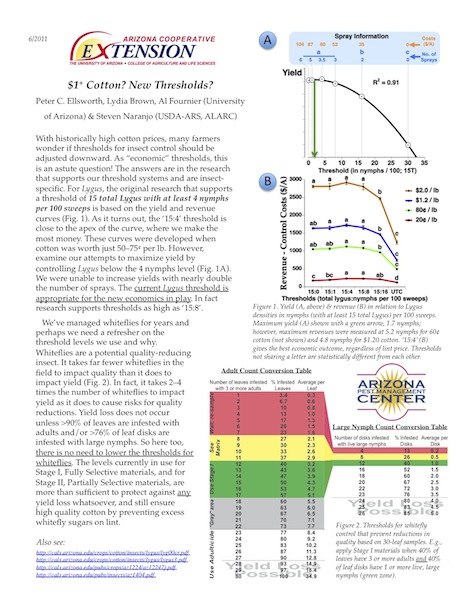-
Oct 2019
The Arizona Pest Management Center uses scientific data and feedback from grower communities to develop comments that inform Environmental Protection Agency (EPA) pesticide registration decisions. Our analysis shows that a high percentage of our comments provide substantive information that influence registration outcomes.
-
Jun 2011While cotton value has increased recently, an economic analysis shows that current recommended thresholds for Lygus and whitefly management in cotton are still the best approach to maximizing profit.
-
Jul 2014Learn more about the relationship between 4 key predators and whitefly bio-control in the cotton system.
-
Jun 2016Accurate data on agricultural pesticide use in Arizona has many uses that benefit grower communities. The accuracy of pesticide use data impacts the quality of UA outreach, publications and reports. This short provides tips and resources to help improve data quality.
-
Jun 2016Chemical Use Maps available to PCAs on a secure website show where whitefly insecticides (6 modes of action) were used in the previous year, at the section level. PCAs and growers can view previous use in sections surrounding their fields to help guide insecticide choices for whitefly management this year. These maps can be a tool to help put first principles of resistance management to work.










